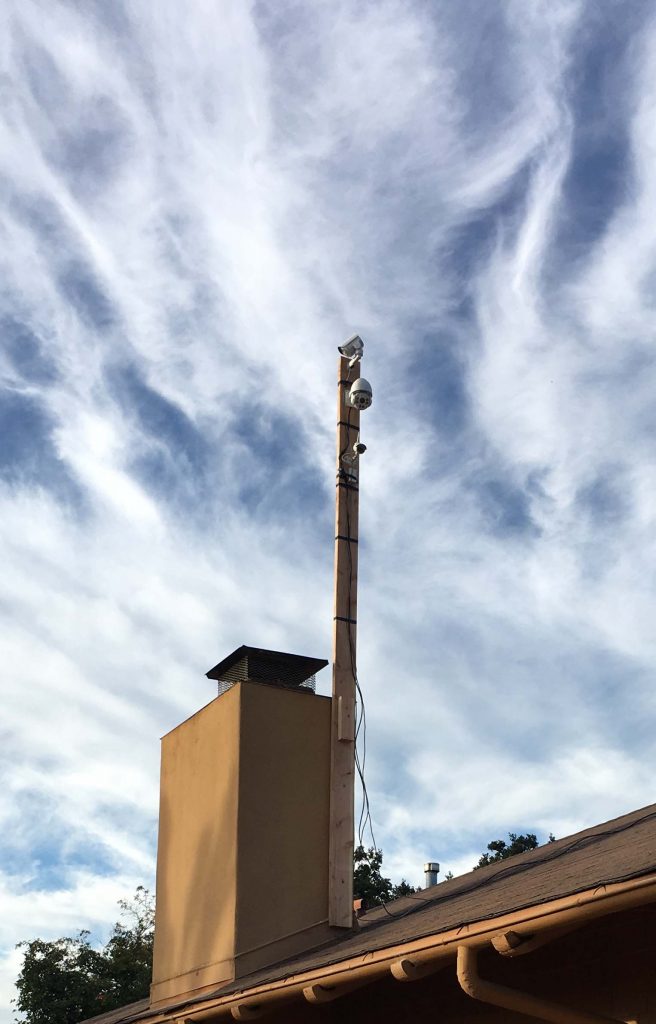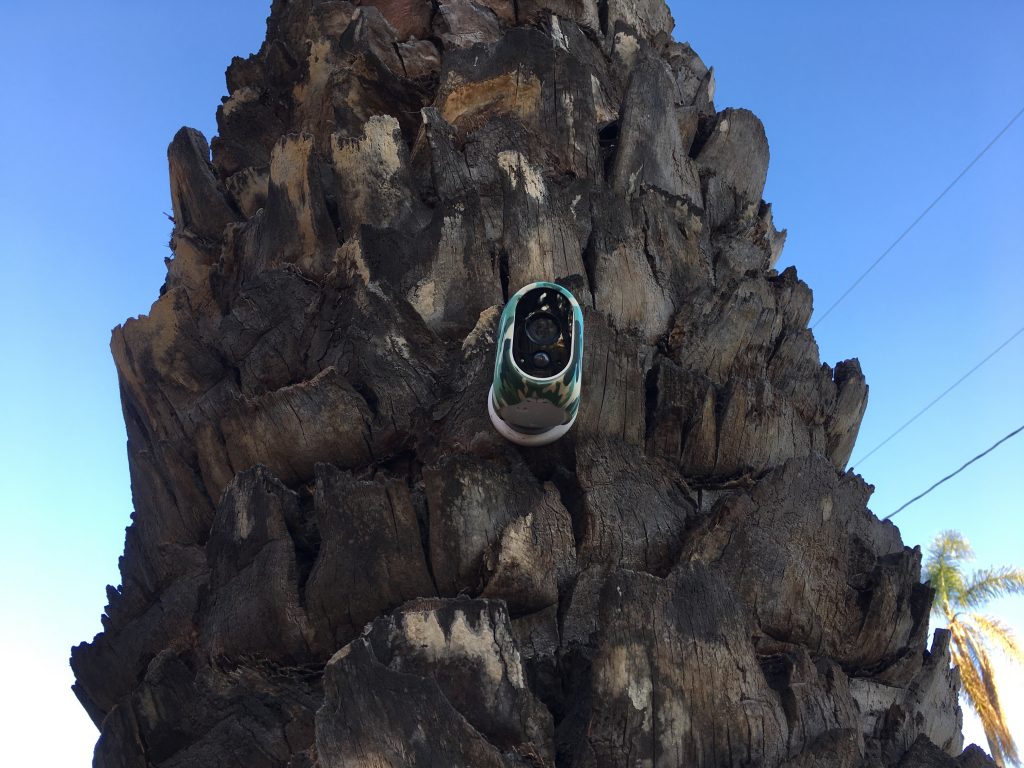I thought I’d mention a bit about site security. Construction sites make attractive targets for theft because of the abundance of valuable raw materials, like copper pipe, and expensive tools.
For the first 10 or so months of construction, we were living in the old house at the back of the property. Living on site is probably one of the best ways to protect the property, but we didn’t stop there. Partly to be able to do a series of time lapse picture series throughout the construction, but also for security, we put in a bunch of video cameras around the property. For example, here is the trifecta of cameras we had on the roof of our old house.

Now that we are no longer residing on the property, we need a bit more security. It starts with all the relocated cameras.

There are some really excellent cameras on the market these days. A decent HD camera with great night vision will run you somewhere around $150-$250. Add PTZ (the ability to pan, tilt, and zoom the camera so you can aim it wherever you want) and you might spend $300 or more.
While the camera system is a little high maintenance (for example, water got into one of the connections last week and fried a camera), it is quite capable:
- The cameras all record about a weeks worth of footage locally on SD cards
- The cameras take one-second snapshots any time they detect motion and upload them to a remote server
- Software called Blue Iris that runs on a PC pulls the video feed from all the cameras, allows you to view it via a web browser or a mobile app, and records footage any time it detects motion.
While this system is great for viewing a live feed, or reviewing anything after the fact to see what happened, it isn’t very good for alerting you if there is any activity. The problem lies in how these cameras and the Blue Iris software detect motion, which is by noticing any changes between video frames. The problem is that, lots of things cause false positives, like shadows. Enabling motion alerts for motion detection of this type is maddening, as it wants to alert you pretty much all of the time.
So, to detect motion, we need a different type of detection. Luckily, Netgear came out with a new wireless, battery operated cameras system called Arlo about a year ago. The cameras operate on batteries, communicate to a wireless base station, and can be easily mounted just about anywhere. Here are a few of them around our property.



These cameras use infrared to detect motion, which is far less likely to trigger with a false positive, and isn’t sensitive to shadows. The cameras can be set to alert you and record HD video whenever they detect motion, can be easily armed or disarmed via a schedule or the mobile app, and can be viewed live at any time.
With these cameras placed strategically around the perimeter of the property, we are alerted whenever there is any activity, and they work quite well. With theft, being alerted when it is actually happening so that we can call the police is the key; it becomes much harder (but likely given all the camera footage we are collecting) to catch someone after the fact.
Netgear recently came out with a cellular version of the Arlo camera, called the Arlo Go, which is perfect for sites that don’t have an existing internet connection.